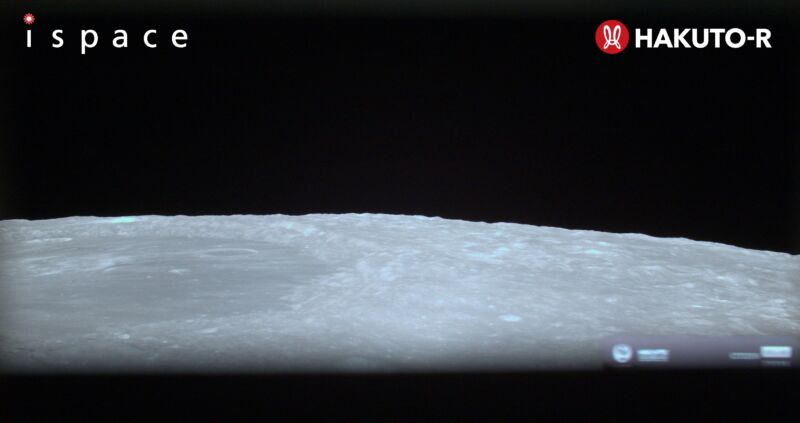
It's nearly time for a privately developed Japanese lunar lander to make a historic attempt to touch down on the Moon.
After spending five months in transit to reach the Moon—following a looping but fuel-efficient trajectory—the Hakuto-R mission will attempt to land on the Moon as early as Tuesday. If its mission operators decide to proceed, the landing attempt will begin as soon as 11:40 am ET on Tuesday (15:40 UTC). It will be livestreamed.
The landing attempt will start from an altitude of about 100 km above the lunar surface, where the spacecraft is presently in a circular orbit. It will begin with a braking maneuver by a firing of the spacecraft's main engine, to be followed by a pre-programmed set of commands during which the lander will adjust its attitude with respect to the Moon's surface and decelerate to make a soft landing. The process should take about an hour.
Based in Tokyo, ispace was founded in 2010 as part of the Google Lunar XPrize competition and has since emerged as one of a new generation of companies focused on commercial lunar services. The company aims to design and build lunar landers and rovers and ultimately provide high-frequency, low-cost transportation services to the Moon. The company has long-term plans to develop lunar resources and sell them to others.
The first flight of the Hakuto-R program launched in December as a dedicated mission on a Falcon 9 rocket. The lunar lander is carrying several payloads down to the lunar surface, including the United Arab Emirates' Rashid rover, along with Tomy and JAXA's SORA-Q transformable lunar robot.
Only a handful of nations have landed on the Moon, and no private company has successfully made a soft touchdown. The first privately funded lunar lander mission, the Israeli Beresheet spacecraft, crashed into the Moon in 2019 after a main engine failure during the landing sequence. If ispace is successful on Tuesday, the company will make history.
This lunar landing is at the vanguard of a number of private landing attempts sponsored, in part, by NASA's Commercial Lunar Payload Services Program, which purchases transport to the Moon from private companies. Two US-based companies, Astrobotic and Intuitive Machines, could both launch their lunar landers to the Moon sometime this summer. Astrobotic says its lander is ready to fly, but the company is waiting on United Launch Alliance to complete the development of the Vulcan rocket. Intuitive Machines will fly on the Falcon 9 rocket, but the company has not yet completed its lander.
By partnering with a US-based team led by Draper Laboratory, ispace is also competing for contracts in the Commercial Lunar Payload Services Program. The Draper team recently won its first contract from NASA to land a scientific payload near the south lunar pole on the far side of the Moon in 2025.



3175x175(CURRENT).thumb.jpg.b05acc060982b36f5891ba728e6d953c.jpg)

Recommended Comments
There are no comments to display.
Join the conversation
You can post now and register later. If you have an account, sign in now to post with your account.
Note: Your post will require moderator approval before it will be visible.